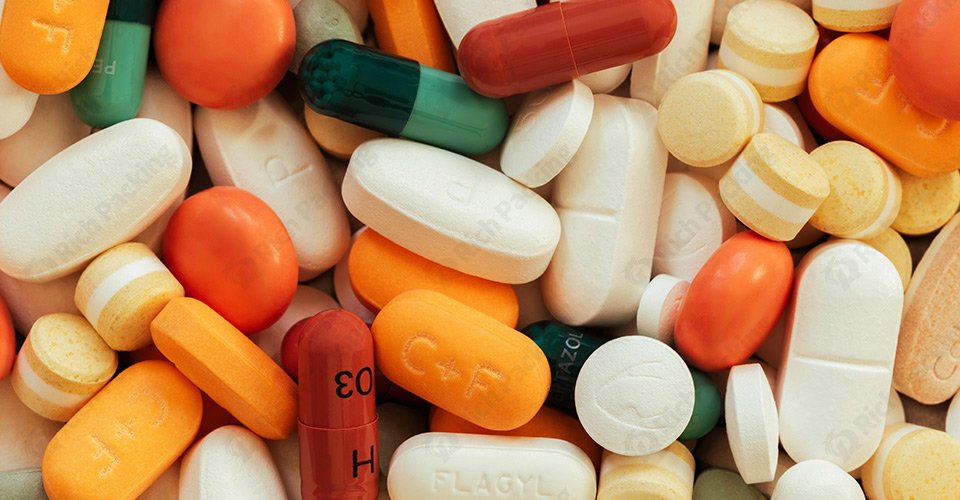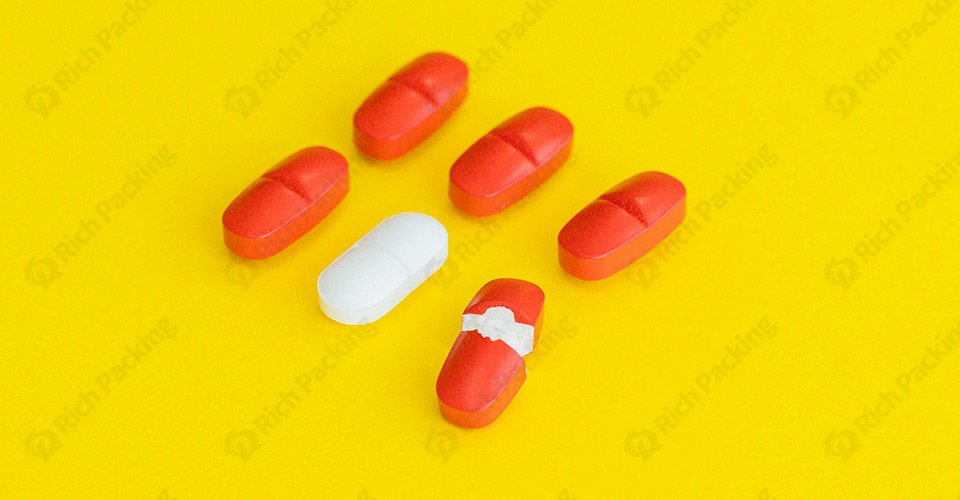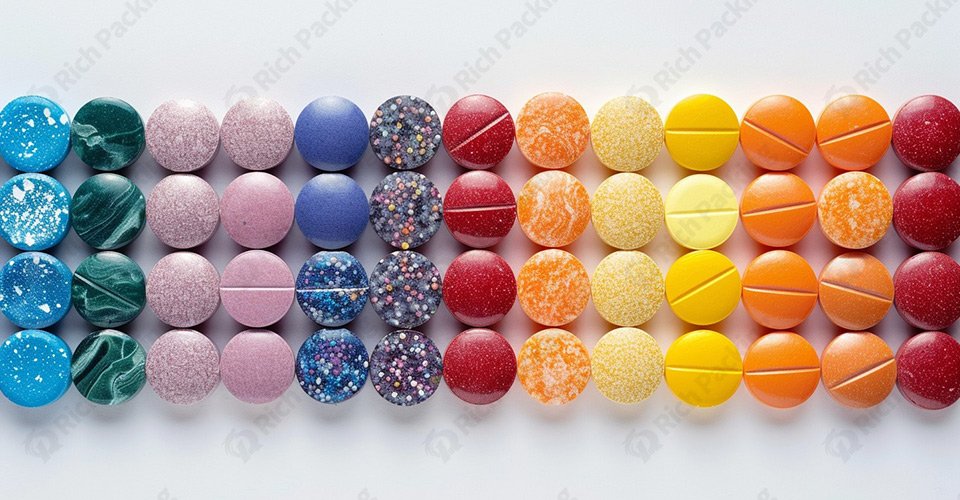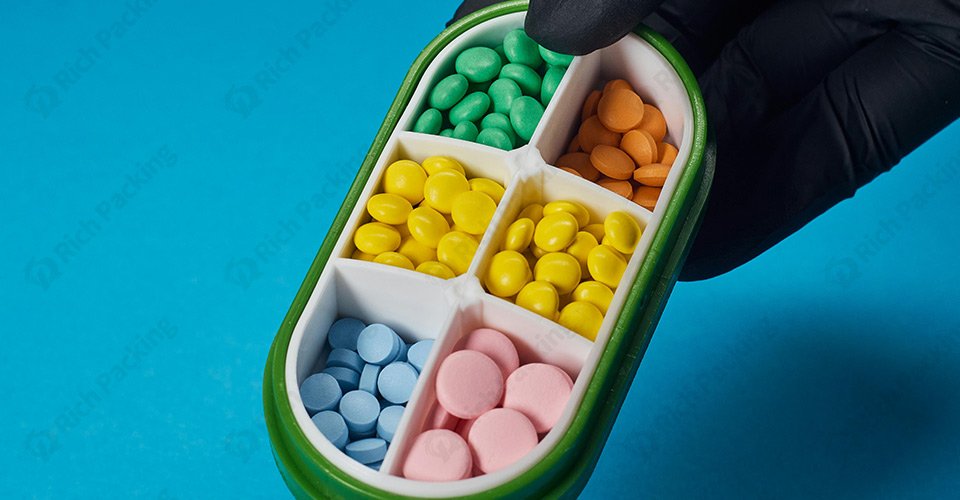ในอุตสาหกรรมยา การเคลือบถือเป็นขั้นตอนสำคัญ การผลิตแท็บเล็ตและแคปซูล . การเลือกระหว่าง การเคลือบฟิล์ม และ การเคลือบน้ำตาล สามารถส่งผลกระทบอย่างมีนัยสำคัญ รูปร่าง - อายุการเก็บรักษา - การปกปิดรสชาติ และโดยรวม ประสิทธิภาพ ของผลิตภัณฑ์ของคุณ ขณะพิจารณาว่าควรใช้วิธีการใดสำหรับยาของคุณ สิ่งสำคัญคือต้องเข้าใจความแตกต่างที่สำคัญ และผลกระทบที่มีต่อกระบวนการผลิต ต้นทุน และความดึงดูดใจผู้บริโภค

การเคลือบฟิล์มคืออะไร?
การเคลือบฟิล์ม เกี่ยวข้องกับการใช้ชั้นป้องกันบางๆ ที่ทำจาก วัสดุที่ทำจากโพลีเมอร์ เป็นเม็ดหรือแคปซูล ซึ่งเป็นเทคนิคที่ทันสมัยกว่าและมีข้อดีหลายประการ รวมถึง การป้องกันที่ดีขึ้น สำหรับส่วนผสมที่ออกฤทธิ์และ เรียบเนียนขึ้น รูปลักษณ์ของแท็บเล็ต
วัสดุทั่วไปสำหรับการเคลือบฟิล์ม ได้แก่ ไฮดรอกซีโพรพิลเมทิลเซลลูโลส (HPMC) - เอทิลเซลลูโลส และอื่นๆ พอลิเมอร์ที่ละลายน้ำได้ วัสดุเหล่านี้ทำหน้าที่เป็นเกราะป้องกันที่บางแต่แข็งแรง เพื่อปกป้องเนื้อหาของเม็ดยาจากความชื้น แสง และอากาศ ซึ่งสามารถทำให้ยาเสื่อมสภาพลงได้ตามกาลเวลา
กระบวนการนี้โดยทั่วไปเกี่ยวข้องกับการพ่นชั้นบาง ๆ ของสารละลายโพลิเมอร์ลงบนพื้นผิวของเม็ดยาขณะที่เม็ดยากำลังหมุนอยู่ในถังหรือถาด เมื่อวัสดุเคลือบแห้ง มันจะก่อตัวเป็น ชั้นแข็งเรียบ เหนือแท็บเล็ต กระบวนการนี้ มีประสิทธิภาพ และสามารถปรับขนาดให้เหมาะสมกับการผลิตขนาดใหญ่ได้อย่างง่ายดาย
การเคลือบฟิล์มมักเป็นที่นิยมสำหรับ ยาเม็ดสมัยใหม่ โดยเฉพาะอย่างยิ่งผู้ที่ต้องการ การปลดปล่อยแบบควบคุม หรือที่ออกแบบมาเพื่อกลบรสขม นิยมใช้กันอย่างแพร่หลาย การปลดปล่อยแบบขยายเวลา - การปล่อยตัวล่าช้า , และ ยาเม็ดเคลือบเอนเทอริก -

การเคลือบน้ำตาล เป็นเทคนิคแบบดั้งเดิมที่เกี่ยวข้องกับการใช้ น้ำเชื่อม รอบๆ เม็ดยาเป็นชั้นๆ หลายชั้นจนกระทั่งกลายเป็นเปลือกนอกที่หนาและหวาน เป็นวิธีการที่ใช้กันมานานหลายปี เป็นที่รู้จักในการผลิต มันวาว - มันเงา แท็บเล็ตที่ดึงดูดทั้งผู้บริโภคและผู้ให้บริการด้านการดูแลสุขภาพ
วัตถุดิบหลักที่ใช้ในการเคลือบน้ำตาลได้แก่ น้ำเชื่อม - เจลาติน - แป้ง และบางครั้ง ขี้ผึ้ง สิ่งเหล่านี้ถูกผสมเข้าด้วยกันเพื่อสร้างชั้นเคลือบป้องกันที่มีรสหวาน
การเคลือบน้ำตาลต้องใช้น้ำเชื่อมหลายชั้นลงบนเม็ดยา โดยแต่ละชั้นต้องผ่านกระบวนการอบแห้ง เม็ดยาจะถูกเคลือบหลายชั้นเพื่อให้ได้ความหนาและความเงางามตามต้องการ แม้ว่ากระบวนการนี้จะให้ผลลัพธ์สุดท้ายที่สวยงาม แต่กระบวนการนี้ใช้เวลาและแรงงานมากกว่าเมื่อเทียบกับการเคลือบฟิล์ม
การเคลือบน้ำตาลมักใช้ใน ยาสำหรับเด็ก - วิตามิน , และ ผลิตภัณฑ์ที่จำหน่ายหน้าเคาน์เตอร์ โดยเฉพาะผู้ที่ได้รับประโยชน์จาก รสหวาน การปกปิดเพื่อให้ผู้บริโภคยอมรับได้ดีขึ้น

การเข้าใจความแตกต่างระหว่างเทคนิคการเคลือบทั้งสองนี้ถือเป็นสิ่งสำคัญในการเลือกเทคนิคการเคลือบที่เหมาะสมกับผลิตภัณฑ์ของคุณ
ความแตกต่างที่สำคัญประการแรกคือ ความหนา ของการเคลือบ การเคลือบฟิล์มจะสร้าง ชั้นบางและสม่ำเสมอ ในขณะที่การเคลือบน้ำตาลทำให้เกิด หนาขึ้น , มากกว่า ใหญ่ขึ้น แท็บเล็ต
ข้อดีและข้อเสียของความหนา
ยาเม็ดเคลือบฟิล์มมีมากกว่า
กะทัดรัด
และกลืนง่ายกว่าเนื่องจากมีขนาดเล็กกว่า ในทางกลับกัน ยาเม็ดเคลือบน้ำตาลมักจะมีขนาดใหญ่กว่าและสามารถรู้สึกได้
หนักกว่า
-
การ ความสวยงามที่ดึงดูดใจ ของผลิตภัณฑ์ของคุณเป็นสิ่งสำคัญต่อความพึงพอใจของผู้บริโภค โดยทั่วไปแล้ว ยาเม็ดเคลือบฟิล์มจะมี เรียบ , รูปลักษณ์ที่เป็นมืออาชีพซึ่งเป็นที่นิยมสำหรับ ยาสมัยใหม่ ในทางกลับกัน ยาเม็ดเคลือบน้ำตาลมี มันวาว, แวววาว เสร็จสิ้น มักจะด้วย สีสัน รูปลักษณ์ที่สามารถดึงดูดผู้บริโภครุ่นเยาว์หรือผู้ที่มองหาอะไรเพิ่มเติม รูปลักษณ์แบบดั้งเดิม -
การรับรู้ของผู้บริโภค
ในตลาดบางแห่ง เม็ดเคลือบน้ำตาลถูกมองว่ามีปริมาณมากกว่า
แบบดั้งเดิม
และอาจดึงดูดลูกค้าที่กำลังมองหาผลิตภัณฑ์ที่คุ้นเคย อย่างไรก็ตาม สำหรับ
แบรนด์พรีเมี่ยม
หรือผลิตภัณฑ์ที่มุ่งเป้าไปที่
ใส่ใจสุขภาพ
ลักษณะที่สะอาดและเงางามของเม็ดยาเคลือบฟิล์มอาจเป็นที่ต้องการมากกว่า
การเคลือบฟิล์มให้คุณภาพที่เหนือกว่า การป้องกัน ขัดต่อ ความชื้น - แสงสว่าง , และ อากาศ ซึ่งทั้งหมดนี้สามารถย่อยสลายสารออกฤทธิ์ทางยาได้ เนื่องจากชั้นฟิล์มที่บางและแข็ง การเคลือบฟิล์มจึงช่วยรักษาความสมบูรณ์ของยา
การเคลือบน้ำตาลแม้จะให้การปกป้อง แต่ก็มีแนวโน้มที่จะ... การแตก หรือ การแตกร้าว เนื่องจากมีชั้นน้ำเชื่อมหลายชั้น และยังไวต่อปัจจัยแวดล้อมต่างๆ เช่น ความชื้น ซึ่งอาจทำให้เกิดการเคลือบน้ำตาลได้ เหนียว หรือ อ่อนนุ่ม -
เมื่อพูดถึงความเร็วและต้นทุนการผลิต การเคลือบฟิล์ม เป็นผู้ชนะที่ชัดเจน กระบวนการมีมากขึ้น มีประสิทธิภาพ และเวลาในการทำให้แห้งที่ต้องการจะสั้นกว่าการเคลือบน้ำตาลมาก สามารถผลิตเม็ดยาเคลือบฟิล์มได้ เร็วขึ้น และที่ ต้นทุนต่ำกว่า ทำให้เหมาะอย่างยิ่งสำหรับการผลิตขนาดใหญ่
การเคลือบน้ำตาลในทางกลับกันคือ ต้องใช้แรงงานมาก และต้องการ การอบแห้งหลายรอบ ซึ่งทำให้มัน ใช้เวลามากขึ้น และ ราคาแพง -
ทั้งฟิล์มและเคลือบน้ำตาลมีความสามารถในการ มาส์กรสชาติที่ไม่พึงประสงค์ แต่ทำในรูปแบบที่แตกต่างกัน การเคลือบฟิล์มช่วยให้ กำแพงกั้นบางๆ ซึ่งช่วยกลบรสขมไว้ได้ ส่วนรสหวานที่เคลือบด้วยน้ำตาลมักใช้เพื่อกลบรสขมของยา
ความเหมาะสมสำหรับยาของเด็ก
การเคลือบน้ำตาลมีประโยชน์โดยเฉพาะสำหรับ
ยาสำหรับเด็ก
เนื่องจากรสหวานทำให้เม็ดยาน่ารับประทานมากขึ้น การเคลือบฟิล์มยังมีประสิทธิภาพสำหรับ
การปกปิดรสชาติ
แต่ก็ไม่ได้ให้รสหวานทันทีเหมือนการเคลือบน้ำตาล

การเลือกวิธีการเคลือบที่ถูกต้องขึ้นอยู่กับปัจจัยหลายประการ รวมถึง ประเภทผลิตภัณฑ์ - การมุ่งเน้นตลาด , และ ความต้องการด้านการผลิต -
ประเภทผลิตภัณฑ์และกลุ่มเป้าหมาย: หากผลิตภัณฑ์ของคุณมุ่งเป้าไปที่เด็กหรือผู้บริโภคที่มองหารสหวาน การเคลือบน้ำตาล อาจเป็นทางเลือกที่ดีกว่า อย่างไรก็ตาม หากคุณกำลังผลิตยาที่ต้องส่งมอบอย่างแม่นยำหรือมีอายุการเก็บรักษาที่ยาวนาน การเคลือบฟิล์ม น่าจะเป็นตัวเลือกที่ดีกว่า
ประสิทธิภาพการผลิต: หากคุณต้องการ ความเร็ว และ ความคุ้มทุน - การเคลือบฟิล์ม เป็นตัวเลือกที่ชัดเจน อย่างไรก็ตาม หากผลิตภัณฑ์ของคุณต้องการรูปลักษณ์แบบดั้งเดิมหรือรสชาติเฉพาะตัวที่เคลือบด้วยน้ำตาลเท่านั้นที่ทำได้ การเคลือบน้ำตาลอาจเป็นทางเลือกที่ดีที่สุด
การสร้างแบรนด์และความน่าดึงดูดใจของตลาด: พิจารณาสิ่งที่ดึงดูดกลุ่มเป้าหมายของคุณมากที่สุด ยาเม็ดเคลือบฟิล์ม เหมาะอย่างยิ่งสำหรับ แบรนด์พรีเมี่ยม และ สูตรขั้นสูง , ในขณะที่ ยาเม็ดเคลือบน้ำตาล สามารถอุทธรณ์ไปยัง ตลาดที่กว้างขึ้น โดยเฉพาะสำหรับผลิตภัณฑ์ที่มุ่งเป้าไปที่ เด็ก -
บทสรุป
ทั้งคู่ การเคลือบฟิล์ม และ การเคลือบน้ำตาล มอบประโยชน์ที่เป็นเอกลักษณ์และเหมาะกับผลิตภัณฑ์ยาประเภทต่างๆ โดยทั่วไปแล้วการเคลือบฟิล์มจะนิยมใช้เนื่องจาก ประสิทธิภาพ - ความคุ้มทุน , และ การป้องกัน ในขณะที่การเคลือบน้ำตาลยังคงมีที่ยืนในตลาดเนื่องจาก รสหวาน และ อุทธรณ์ ในหมวดหมู่ผลิตภัณฑ์บางประเภท
การเข้าใจข้อดีและข้อจำกัดของทั้งสองวิธีจะช่วยให้คุณตัดสินใจได้อย่างชาญฉลาดว่าเทคนิคการเคลือบแบบใดเหมาะกับผลิตภัณฑ์ยาและความต้องการทางธุรกิจของคุณมากที่สุด ไม่ว่าคุณจะมุ่งหวัง การผลิตความเร็วสูง หรือ การดึงดูดผู้บริโภค การเลือกการเคลือบของคุณจะมีบทบาทสำคัญต่อความสำเร็จของผลิตภัณฑ์ของคุณ